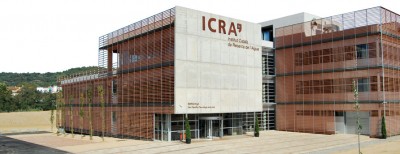New Delhi, Jan 4 : Given the Covid-induced disruption, the trajectory of total infrastructure credit in India (banks and infrastructure finance non-bank companies) slowed to 1 per cent sequential growth in H1 FY2021, ICRA said on Monday.
According to a report by the ratings agency, while infrastructure credit grew 7 per cent in FY2020 (19 per cent in FY2019) to Rs 22.5 lakh crore as on March 31, 2020, it increased marginally to Rs 22.6 lakh crore as on September 30, 2020.
“The tepidness in infrastructure credit in H1 FY2021 was primarily due to the sequential de-growth (10 per cent) in banking sector credit to the infrastructure segment, though NBFC-IFCs continued to grow at a modest sequential pace of 12 per cent in this period. However, the growth was majorly led by disbursements related to liquidity package announced by government for cash-strapped discoms,” said Manushree Saggar, Vice President and Head, Financial Sector Ratings, ICRA.
The share of NBFC-IFCs in infrastructure credit has increased to 53 per cent as of September 30, 2020 from about 38 per cent five years ago. The decline in share of banks during past few years was largely attributable to the conversion of their exposures to state distribution companies into bonds and subdued lending amid asset quality issues and capital constraints, ICRA said.
At the same time, it added, portfolio for NBFC-IFCs continued to grow though largely at the back of growth in the public sector NBFC-IFCs. As for asset quality, the NBFC-IFCs witnessed a deterioration during FY2016-FY2018 on the back of severe stress in the thermal power sector.
However, the trend over past three years suggested receding asset quality pressures, particularly up to onset of Covid-induced disruption. The gross stage 3 percentage had eased to 5.7 per cent as on March 31, 2020 from 7.3 per cent as on March 31, 2018, supported by controlled fresh slippages and some resolution in legacy stressed assets.
The gross stage 3 percentage for NBFC-IFCs eased further to four-year low of 5 per cent as on September 30, 2020, partly aided by limited forward bucket movement amid the prolonged moratorium period.
Further, while more clarity on the impact of Covid-induced disruption on asset quality trajectory will emerge over coming quarters, most infrastructure sub-sectors remained relatively resilient from debt servicing perspective in lockdown conditions supported by factors such as must-run status of renewable energy projects, healthy recovery in toll collections, liquidity support to discoms etc.
The ICRA report said that most freight indicators have reverted to pre-Covid levels as economy revived, road traffic and toll collections have registered marked growth for three consecutive months on Y-o-Y basis, electricity and fuel consumption is reverting to Y-o-Y growth trend, and construction activity has picked up in recent months.
Hence, the incremental stress in infrastructure sector due to Covid-induced disruption is expected to be limited, and the proportion of portfolio of IFCs likely to be restructured is expected to be in low single digits. Nonetheless, any stress build-up in the near to medium term from spill overs due to the region-specific headwinds faced by the renewable energy sector remains a monitorable.
Deep Inder Singh, Assistant Vice President – Financial Sector Ratings, ICRA, said: “Steady provision build-up also augurs well for risk profiles of IFCs, especially when pace of stressed asset resolutions has got constrained by Covid-induced disruption and is expected to get elongated.”
The Central Government has set a target of infrastructure investment of over Rs 111 lakh crore under the national infrastructure pipeline (NIP) over FY2020-FY2025. While this was already being seeing as ambitious prior to the pandemic, the Covid-19 induced disruption has further increased the challenges.
Disclaimer: This story is auto-generated from IANS service.

